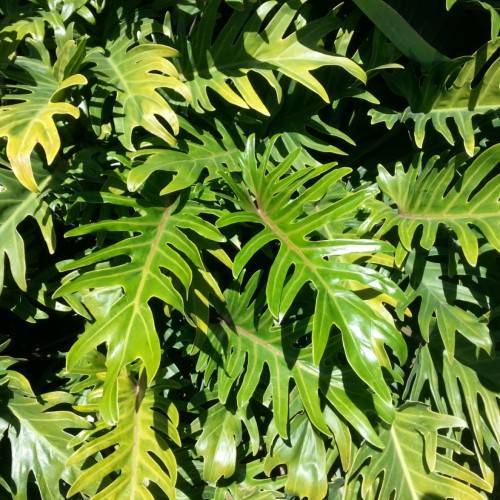
philodendron
Philodendron 'Winterbourn' XANADU
Cycle:
Herbaceous Perennial
Watering:
Average
Hardiness Zone:
9 - 11
Flowers:
Flowers
Sun:
part shade,part sun/part shade
Leaf:
Yes
Growth Rate:
High
Maintenance:
Low
Indoors:
Yes
Care Level:
Medium
watering
When it comes to watering a Philodendron 'Winterbourn' XANADU, the general rule of thumb is to keep its soil on the lightly moist side. To ensure this, water the plant thoroughly whenever the soil feels slightly dry to the touch, usually about once a week. Also, be sure to check the soil moisture levels more often during the warmer months and in regions with higher temperatures, as the soil will dry out faster. Finally, make sure to provide your Philodendron 'Winterbourn' XANADU with enough humidity. Mist it regularly to prevent its leaves from browning and curling.
sunlight
Philodendron ‘Winterbourn’ XANADU should receive bright indirect sunlight for about 4-5 hours a day. It thrives in medium to low light but needs some light to grow and thrive. Place the plant in a well-lit spot, near an east or west-facing window or in a conservatory for optimal light. Too much direct sun will cause the leaves to curl or burn, so avoid too much exposure. Natural light is best, but if artificial light is needed, use a fluorescent bulb.
pruning
For Philodendron 'Winterbourn' XANADU, pruning should be conducted 2 to 3 times a year, typically in the late spring, early summer, and late summer. Pruning should remove any yellow, brown or dead leaves, stems and stalks, and cut back any overgrown stems. If the plant looks tangled, pruning should be done to thin out the foliage. Overall, avoid pruning too heavily - the plant should still look full.
Season
Hardiness Map
FAQ
Are heartleaf philodendrons easy to care for?
Yes, heartleaf philodendrons are typically very easy to care for. This popular houseplant is resistant to most diseases and problems, needs minimal pruning, and prefers lower, indirect light. A heartleaf philodendron's soil should be kept evenly moist, with watering every week or two depending on lighting. It's best to let the top couple of inches of soil dry out before re-watering. Remember to mist these plants regularly to compensate for the lack of humidity in many homes. With the right amount of love and care, these beautiful philodendrons will be sure to bring life and color to any home.
Could heartleaf philodendrons be toxic to pets?
Yes, heartleaf philodendrons can be toxic to pets. The stems, leaves, and flowers of the heartleaf philodendron contain calcium oxalate crystals, which are known to cause irritation if ingested. Furthermore, ingestion of large amounts of heartleaf philodendrons can lead to difficulty breathing, drooling, vomiting, and even death in severe cases. Therefore, it is important to keep these plants out of reach of pets, as even causing minor irritation is not ideal.
Do heartleaf philodendrons need frequent watering?
Heartleaf Philodendrons do not need frequent watering. They prefer to be left to dry out in between waterings. When the top inch or two of soil gets dry, it's time to water. However, it is important to not let the soil get soggy and to not let them sit in water. They should also be fertilized seasonally with an appropriate fertilizer.
Can heartleaf philodendrons bloom in low-light conditions?
No, heartleaf philodendrons typically need bright, indirect light in order to bloom. With low-light conditions, you may still be able to keep the plant alive, however it won't produce any flowers. In order to have a healthy blooming heartleaf philodendron, plenty of natural or artificial light (but not direct sunlight) is necessary.
Could heartleaf philodendrons be propagated by cutting?
Yes, heartleaf philodendrons can be propagated by cutting. This is a simple process that involves cutting the stem just above a leaf node. Make sure to use a clean, sharp blade or scissors when cutting and to remove any excess leaves. Then, the stem should be placed in a jar of water so that the node is submerged, and allow the plant to establish its roots in the water before planting it in potting soil. It is important to note that rooted heartleaf philodendrons should not be fertilized for at least the first two weeks after propagation.
